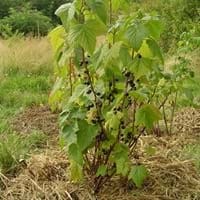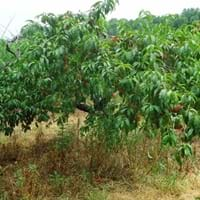Life Span
Perennial
Perennial
Origin
Europe, Central Asia, Western Asia
China
Types
Not Available
Freestone, Clingstone
Number of Varieties
Not Available
Habitat
Fertile bottom land, Temperate Regions
Temperate Regions, Warmer regions
USDA Hardiness Zone
Not Available
5-9
Sunset Zone
Not Available
Not Available
Habit
Upright/Erect
Upright/Erect
Flower Color
Green, Purple
Pink
Flower Color Modifier
Bicolor
Bicolor
Fruit Color
Purple, Black
Yellow, Red, Pink, Peach
Leaf Color in Spring
Green
Green
Leaf Color in Summer
Green
Green
Leaf Color in Fall
Green
Green
Leaf Color in Winter
Light Green
Light Green
Leaf Shape
Palmately Lobed
Elliptic
Plant Season
Spring, Summer, Fall
Spring, Summer, Fall
Sunlight
Full Sun, Partial Sun, Partial shade
Full Sun
Growth Rate
Medium
Medium
Type of Soil
Loam
Loam, Sand
The pH of Soil
Acidic, Neutral, Alkaline
Acidic, Neutral, Alkaline
Soil Drainage
Well drained
Well drained
Tolerances
Drought
Drought
Where to Plant?
Container, Ground, Pot
Container, Ground, Pot
How to Plant?
Seedlings, Stem Cutting
Grafting
Plant Maintenance
Medium
Medium
Watering Requirements
Keep the ground moist but not water-logged
Requires regular watering, Requires watering in the growing season
In Summer
Lots of watering
Lots of watering
In Spring
Moderate
Moderate
In Winter
Average Water
Average Water
Soil pH
Acidic, Neutral, Alkaline
Acidic, Neutral, Alkaline
Soil Type
Loam
Loam, Sand
Soil Drainage Capacity
Well drained
Well drained
Sun Exposure
Full Sun, Partial Sun, Partial shade
Full Sun
Pruning
Remove damaged leaves, Remove dead branches, Remove dead leaves
Prune every year, Prune to stimulate growth, Remove damaged leaves, Remove dead branches, Remove dead leaves, Remove hanging branches
Fertilizers
10-10-10 diluted liquid fertilizer
Compost, fertilize in spring, fertilize in summer, Nitrogen, Phosphorous
Pests and Diseases
Aphids, Earwigs, Insects, Mildew, Red blotch, Rust, sawflies
Bacterial Canker, Bacterial leaf spot, Crown gall, Leaf curl, Red blotch, Rust, Scab
Plant Tolerance
Cold climate
Drought
Flowers
Insignificant
Showy
Flower Petal Number
Single
Single
Foliage Texture
Medium
Medium
Foliage Sheen
Matte
Glossy
Allergy
Asthma, Eczema, Food Allergy, Hives
Avoid during Pregnancy
Aesthetic Uses
Not Used For Aesthetic Purpose
Not Used For Aesthetic Purpose
Beauty Benefits
Not Available
Good for skin and hair
Environmental Uses
Air purification
Air purification, Food for animals, Food for birds, Food for insects, Nesting sites for birds, Prevent Soil Erosion
Medicinal Uses
Potassium, Rich in Iron, Vitamin B, Vitamin C
Cancer, Diabetes, Heart problems, Nutrients, Skin Disorders
Part of Plant Used
Fruits, Leaves, Seeds
Fruits
Other Uses
Traditional medicine, Used as a nutritious food item, Used As Food, Used for its medicinal properties
Cosmetics, Used As Food, Used for its medicinal properties
Used As Indoor Plant
Yes
No
Used As Outdoor Plant
Yes
Yes
Garden Design
Edible, Fruit / Fruit Tree, Hedges, Mixed Border
Fruit / Fruit Tree
Botanical Name
RIBES nigrum
PRUNUS persica 'Saturn'
Common Name
Black Currant
Donut Peach, Peach, Saturn Peach, Yellow Freestone Peach
In Hindi
Black Currant
डोनट पीच
In German
Black Currant
Donut Pfirsich
In French
groseille noire
Donut Peach
In Spanish
negro Grosella
Donut Peach
In Greek
μαύρη σταφίδα
ντόνατ Ροδάκινο
In Portuguese
groselha-preta
Donut Peach
In Polish
czarna porzeczka
Donut Peach
In Latin
nigrum currants
Donut Peach
Phylum
Magnoliophyta
Magnoliophyta
Class
Magnoliopsida
Magnoliopsida
Family
Grossulariaceae
Rosaceae
Clade
Angiosperms, Core eudicots, Eudicots
Angiosperms, Eudicots, Rosids
Tribe
Not Available
Not Available
Subfamily
Not Available
Cetoniinae
Number of Species
Not Available
Not Available
Properties of Black Currant and Donut Peach
Wondering what are the properties of Black Currant and Donut Peach? We provide you with everything About Black Currant and Donut Peach. Black Currant has thorns and Donut Peach doesn't have thorns. Also Black Currant does not have fragrant flowers. Black Currant has allergic reactions like Asthma, Eczema, Food Allergy and Hives and Donut Peach has allergic reactions like Asthma, Eczema, Food Allergy and Hives. Compare all the properties and characteristics of these two plants. Find out which of these plant can be used as indoor plant. If you are interested to decorate your house and garden, find out aesthetic uses, compare them and select the plant which will beautify your surrounding. Along with beautification, try comparing medicinal and edible uses of Black Currant and Donut Peach and you can choose the plant having best and most benefits.
Season and Care of Black Currant and Donut Peach
Season and care of Black Currant and Donut Peach is important to know. While considering everything about Black Currant and Donut Peach Care, growing season is an essential factor. Black Currant season is Spring, Summer and Fall and Donut Peach season is Spring, Summer and Fall. The type of soil for Black Currant is Loam and for Donut Peach is Loam, Sand while the PH of soil for Black Currant is Acidic, Neutral, Alkaline and for Donut Peach is Acidic, Neutral, Alkaline.
Black Currant and Donut Peach Physical Information
Black Currant and Donut Peach physical information is very important for comparison. Black Currant height is 120.00 cm and width 120.00 cm whereas Donut Peach height is 370.00 cm and width 370.00 cm. The color specification of Black Currant and Donut Peach are as follows:
Black Currant flower color: Green and Purple
Black Currant leaf color: Green
Donut Peach flower color: Pink
- Donut Peach leaf color: Green
Care of Black Currant and Donut Peach
Care of Black Currant and Donut Peach include pruning, fertilizers, watering etc. Black Currant pruning is done Remove damaged leaves, Remove dead branches and Remove dead leaves and Donut Peach pruning is done Prune every year, Prune to stimulate growth, Remove damaged leaves, Remove dead branches, Remove dead leaves and Remove hanging branches. In summer Black Currant needs Lots of watering and in winter, it needs Average Water. Whereas, in summer Donut Peach needs Lots of watering and in winter, it needs Average Water.





